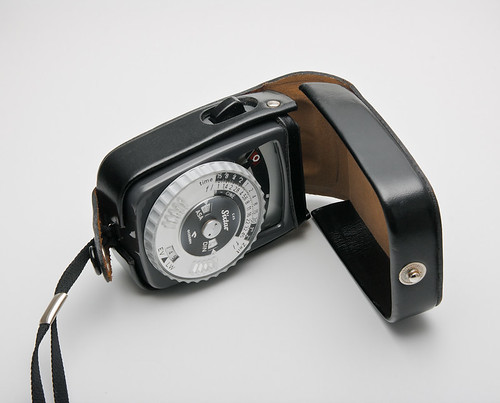Gossen Sixtar

|
| Gossen Sixtar image by Daniel Wirgård (Image rights) |
The 1966 Gossen Sixtar (in US Super Pilot) exposure meter was a derivative of the Lunasix, apparently aimed at the advanced amateur. The Sixtar has a display with match needle instead of luminance scale, making it easier to use.
The 1977 Sixtar 2 (in US Super Pilot SBC) was a completely new meter, but with the same match needle measurement of the Sixtar.
Both meters will accept the same range of clip on accessories as the Lunasix.
Measurement
The Sixtar measures continuously, there is no power switch. The match needle is aligned over the reading needle and then corresponding aperture and shutter speeds read from the scale.
For low light, the button is depressed to activate a reduced scale. In extreme low light, this button can be depressed further to lock the reading needle.
Specifications
| Sixtar | Sixtar 2 | |
|---|---|---|
| Type | Hand held exposure meter | |
| Introduction | 1966 | 1977 |
| Sensor | CdS (Cadmium Sulphide) | SBC (Silicon Blue Cell) |
| Measurement | Ambient reflected & incident | |
| Sensitivity | -6 to +24 LV | |
| Display | Moving needle + Match needle | |
| Aperture | f 1 to f 45 | |
| Film Speed | 6 to 12,500 ISO / ASA | |
| Time | 1/2,000s to 2 hours | 1/2,000s to 30 minutes |
| Power | 2 x mercury cell | |
| Dimensions | 95 x 71 x 34mm | |
| Weight | 103g | |
Links
- Gossen Sixtar user manual (in German and French) at Butkus.org